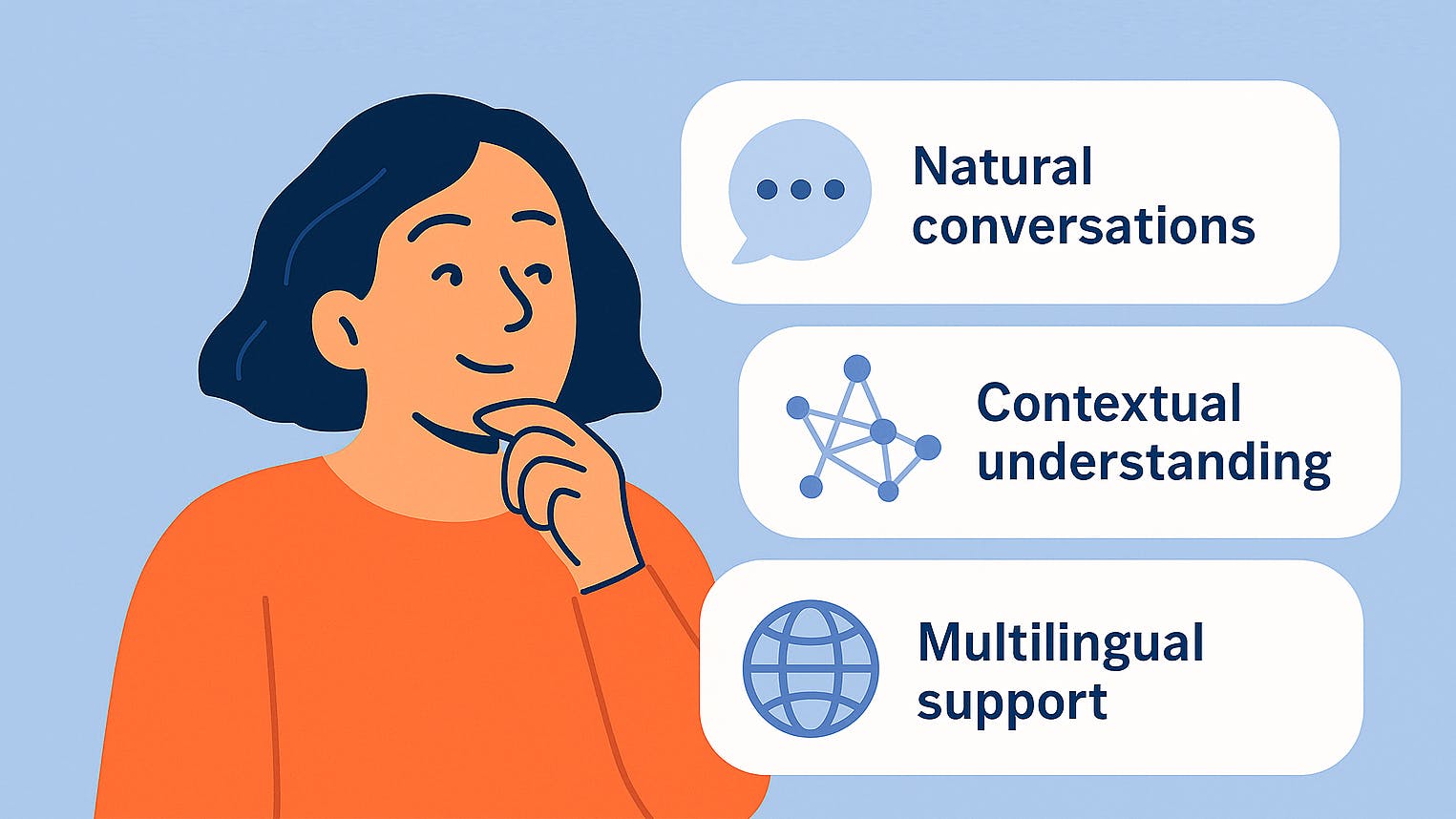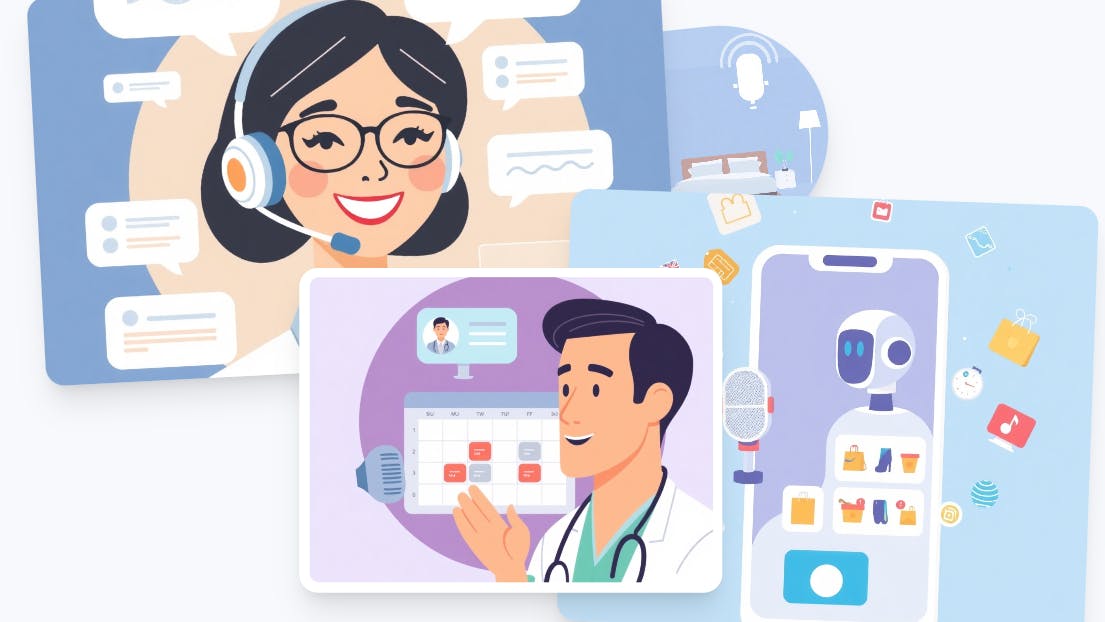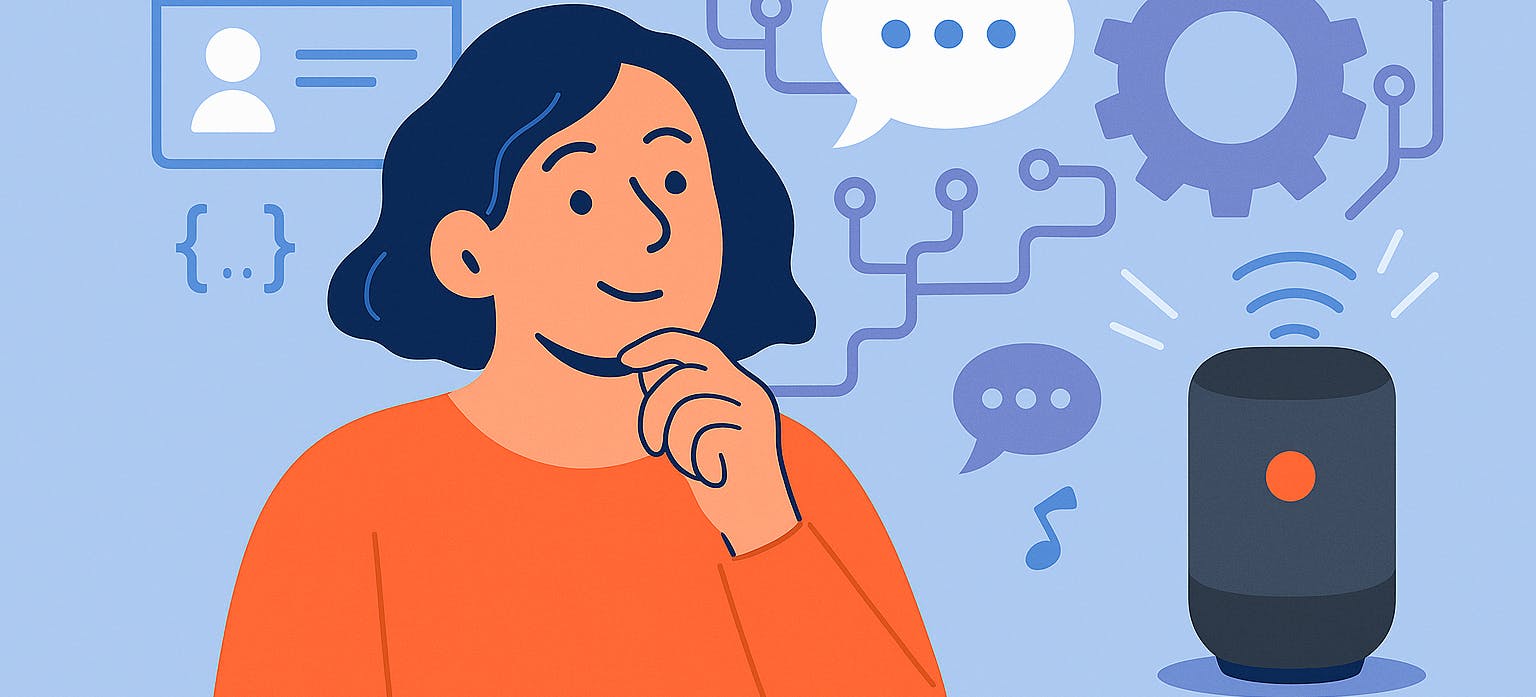Not long ago, voicebots were the thing customers dreaded most about calling a business. Everyone remembers those rigid IVR trees — “press 1 for billing, press 2 for technical support” — that left you stuck in a maze with no way out. Customers hated them, and companies tolerated them only because they were cheaper than hiring extra staff.
Fast-forward to today, and the world looks very different. Generative AI has redefined what’s possible. With large language models (LLMs) such as GPT-4, voicebots can now engage in contextual, natural-sounding conversations. Instead of treating every request as a command, they understand intent, adapt to user behavior, and even personalize tone.
This is not just incremental progress. It’s a full-blown revolution in business-to-customer interaction. According to Gartner, by 2026 80% of customer service interactions will involve generative AI . That’s a staggering figure, considering how limited voicebots were just five years ago.
Platforms like vTalk.ai are part of this shift. They allow companies to set up voice assistants powered by generative AI that don’t just mimic human speech, but actually solve problems and guide customers like skilled agents.
What Are Generative Voicebots?
At their core, generative voicebots are AI-powered systems that move beyond scripted flows. Instead of fixed responses, they rely on advanced technologies:
- Natural Language Processing (NLP). Breaking down human language into machine-readable structures.
- Natural Language Understanding (NLU). Going deeper to identify intent, emotions, and context.
- Text-to-Speech (TTS). Converting responses into human-like voices, complete with natural intonation.
- Large Language Models (LLMs). Providing flexibility by drawing on billions of data points to create contextual, adaptive replies.
Whereas traditional bots would break if you strayed off-script, generative bots thrive on unpredictability. If a customer says, “I think I was double-charged for my headphones,” the system understands the meaning and acts accordingly.
In other words, traditional bots answer questions — generative bots hold conversations.
Why It Matters
The modern customer expects three things: speed, accuracy, and empathy. Old bots rarely delivered any of those. Generative AI changes that equation.
A Forrester survey showed that 63% of consumers prefer AI-driven service if it saves them time and reduces frustration. This is where voice AI shines. It reduces wait times, handles repetitive tasks, and gives customers exactly what they want — fast answers without the runaround.
For businesses, the upside is just as big. Generative AI doesn’t only cut costs; it boosts customer loyalty and revenue. PwC estimates that companies offering superior experiences achieve 16% price premiums on average (PwC). Voice AI is one of the fastest routes to delivering those superior experiences.
Benefits of Generative AI Voicebots

1. Natural Conversations
The days of robotic voices are over. Modern TTS technology has advanced to the point where most people can’t tell the difference. OpenAI’s research highlights how new speech models produce voices nearly indistinguishable from human speakers.
For customers, this means no more monotone instructions. Instead, conversations flow naturally, reducing frustration and creating a sense of being understood.
2. Contextual Understanding
Old IVRs treated every interaction in isolation. Generative bots retain context across the dialogue.
A simple example:
- Customer: “I need help with a weird charge on my account.”
- Bot: “I see a transaction from March 3rd that looks unusual. Do you mean this one?”
This ability to remember and link information is the difference between “robotic” service and truly human-like help.
3. Multilingual by Default
Generative AI voicebots break down language barriers. A customer can start in English, switch to Spanish halfway through, and the assistant follows seamlessly. Google Research found that multilingual LLMs cut translation errors by 40% compared to older models.
For global businesses, that’s game-changing. One voice assistant can serve international customers without building separate teams for each language.
4. Personalization
Generative AI tailors conversations to individual users. Tone, pacing, and even empathy levels can shift based on the situation.
A McKinsey study shows that AI-driven personalization boosts revenue by 10–30%. For voicebots, this means welcoming returning customers by name, recognizing frustration in their voice, or suggesting solutions based on past interactions.
Business Applications

Generative AI voicebots are already proving their value across industries.
1. Customer Support
Bots manage FAQs, order tracking, and password resets with ease. IBM research shows AI reduces support costs by 30% while improving resolution times. Human agents are freed to focus on complex, high-value tasks.
2. Sales and Lead Qualification
Voicebots are excellent at greeting prospects, answering product questions, and even booking demos. Deloitte’s analysis found that AI assistants improve sales conversion rates by around 20%. For businesses, that translates directly to higher revenue without increasing headcount.
3. Banking and Finance
In industries where security and speed matter most, generative AI provides both. Customers can check balances, confirm transactions, or get fraud alerts instantly. Voice AI reduces friction while strengthening trust.
4. Healthcare
From triaging calls to scheduling appointments, voicebots lighten the load on overburdened medical staff. Patients get faster responses, and critical cases reach doctors more quickly.
5. Recruitment
Recruiters spend hours on initial screening. Generative AI voicebots handle those repetitive calls — asking about skills, experience, and availability — and only escalate promising candidates to humans.
WithvTalk.ai, businesses can configure all these scenarios easily, using built-in analytics to monitor performance and refine workflows.
Challenges to Consider
No technology is flawless, and generative AI is no exception.
- Accuracy: LLMs sometimes produce confident but wrong answers. In industries like healthcare or finance, this can be a serious risk.
- Compliance: Privacy laws such as GDPR or HIPAA require rigorous data handling. Voice AI must be designed with compliance baked in.
- Trust: With synthetic voices becoming indistinguishable from real ones, the risk of deepfake abuse is growing. MIT Technology Review warns that transparency and safeguards will determine adoption success.
Companies must implement human-in-the-loop oversight, audit data use, and clearly signal when customers are speaking with AI.
The Future of Voice AI
The direction is clear: voice will become the default interface for digital interactions. Why type when you can just speak? Why wait for an email reply when you can ask a question and get an instant answer?
Generative AI enables this shift. Voice assistants are already moving across channels — from call centers to smart devices, in-car assistants, and even AR/VR platforms.
Microsoft’s Copilot announcement demonstrates how multimodal AI (voice, text, video together) is advancing at breakneck speed. Soon, customers won’t think of “chat” versus “voice” — it will all feel seamless.
By 2030, most routine customer interactions are expected to be handled by generative voice assistants, leaving humans to focus on strategy and complex problem-solving.
How vTalk.ai Helps
Implementing cutting-edge AI can feel overwhelming, but vTalk.ai makes it simple.
With our platform, businesses can:
- Build intelligent assistants that handle natural conversations.
- Automate repetitive queries without sacrificing customer satisfaction.
- Transfer seamlessly to human agents when needed.
- Use analytics and call recording to ensure compliance and measure performance.
- Operate 24/7 while keeping costs under control.
This allows companies to offer world-class customer experiences while scaling efficiently.
Conclusion
Generative AI has taken voicebots from a source of frustration to a source of competitive advantage. Instead of cold, robotic systems, we now have assistants capable of empathy, personalization, and human-like conversation.
Customers benefit with faster service, multilingual support, and smoother experiences. Businesses benefit with lower costs, higher loyalty, and measurable revenue growth.
As Gartner, Deloitte, and McKinsey all emphasize, the companies that adopt generative AI early will define customer expectations in the coming decade. Those that hesitate risk being left behind.
And you don’t have to start from scratch. With vTalk.ai, you can launch generative AI voice assistants today, giving your customers the kind of experience they’ll actually want to come back to.
FAQ
1. What is a generative AI voicebot?
It’s an AI-powered voice assistant that uses large language models (LLMs) to understand intent, remember context, and hold fluid conversations. Unlike old IVRs, it doesn’t force you into rigid menus — it feels like talking to a real agent.
2. Will generative AI replace human agents?
No. Voicebots handle repetitive and predictable queries, while humans focus on complex cases. Together they create faster, smoother, and more satisfying customer experiences.
3. Can these systems work in multiple languages?
Yes. Modern AI models support multilingual interactions and can even switch languages mid-conversation, making them ideal for businesses with global customers.
4. What are the main business benefits?
Companies see lower support costs, faster resolution times, higher conversion rates, and better customer satisfaction. With vTalk.ai, you also gain built-in analytics, compliance features, and 24/7 availability.
